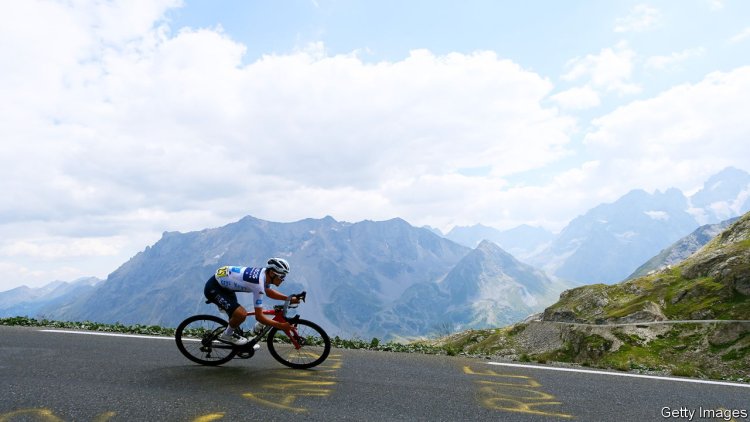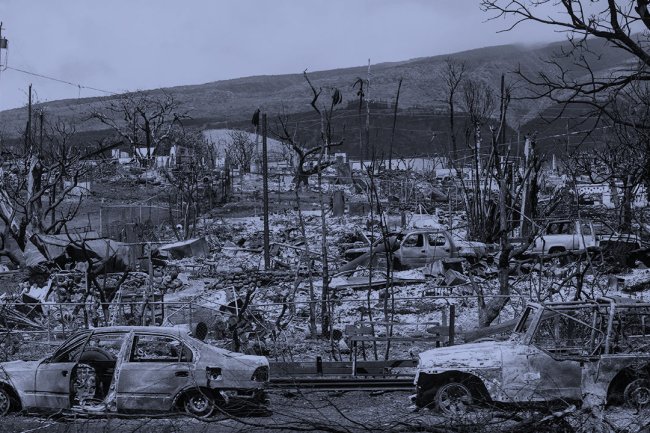High-speed descents are the talk of the Tour de France
image: Getty ImagesIT TAKES GREAT skill to urinate off the side of a moving bicycle. Tom Pidcock did so after zooming down the Col du Galibier during the 12th stage of last year’s Tour de France. He had just finished demonstrating another of his cycling proficiencies: descending. The progress made by Mr Pidcock, who won a gold medal in mountain-biking in the delayed Tokyo Olympics in 2021, is one of the talking-points of this year’s tour, which began on July 1st. But so too are the risks he and others take as they plummet down the mountains.Mr Pidcock’s twisting, precipitous journey astonished not just those watching but those he overtook. His ability to read a corner, to know exactly when to brake and the best angles to take when heading into and out of bends, allows him to gain time on his competitors. It’s a skill that may owe much to the time he spent as a junior racer pelting down hillsides off-road. “He makes Chris Froome look like an amateur,” observed one commentator as the Bri


IT TAKES GREAT skill to urinate off the side of a moving bicycle. Tom Pidcock did so after zooming down the Col du Galibier during the 12th stage of last year’s Tour de France. He had just finished demonstrating another of his cycling proficiencies: descending. The progress made by Mr Pidcock, who won a gold medal in mountain-biking in the delayed Tokyo Olympics in 2021, is one of the talking-points of this year’s tour, which began on July 1st. But so too are the risks he and others take as they plummet down the mountains.
Mr Pidcock’s twisting, precipitous journey astonished not just those watching but those he overtook. His ability to read a corner, to know exactly when to brake and the best angles to take when heading into and out of bends, allows him to gain time on his competitors. It’s a skill that may owe much to the time he spent as a junior racer pelting down hillsides off-road. “He makes Chris Froome look like an amateur,” observed one commentator as the Briton eased past his compatriot, a four-time winner.
At times, as he sped to catch up with the leading riders, Mr Pidcock exceeded 100kph (62mph). He then powered up the Alpe d’Huez, to become, at 22, the youngest rider to win the stage that finishes on that renowned mountain. But it was his exhilarating earlier descent on the Galibier that set up his victory.
There are eight mountain stages in this year’s tour, two more than last year’s, though the Alpe d’Huez does not feature. The first takes place in the Pyrenees on July 5th, unusually early in the schedule. From there the race runs through to the Alps, the Jura and the Vosges, taking in the Massif Central along the way. It will be a true test for the world’s greatest climbers—and descenders.
Downhill “attacking” is new to cycling. “Thirty years ago, no one attacked on a descent. It was too dangerous,” says Steve Chainel, a former professional cyclist, in “Unchained”, a newly released documentary on the tour on Netflix. “These days, it’s a key element for a fully rounded rider.” This development has made the sport more exciting but has inevitably increased the risks. That was tragically underscored in June on the Tour de Suisse. Gino Mäder, riding in his home event, fell on a turn while descending in the Alps. He was airlifted to hospital from a ravine but died a day later from his injuries.
Mäder’s death reignited a conversation about the dangers of descending. Some called for the use of safety-netting on the most dangerous turns of the Tour de France. Another proposal was the use of airbags, a new technology cyclists wear around the neck, which inflate to protect the head in the event of a crash. On the eve of this year’s tour, Christian Prudhomme, the race director, announced a raft of new safety measures. They include the placing of 30-metre-long mattresses, brought in from the World Ski Championships, on the most dangerous parts of one notorious Alpine descent. Padded barriers will also be employed, as will signs that sound warnings that dangerous corners are coming up.
Such measures are welcome, but the dangers faced by professional cyclists remain serious and varied, whether the road is steep or flat. The “bunch sprint”, when riders charge in a group for the line, separated by milliseconds, is a dangerous cocktail of elbows, wheels and speeds exceeding 60kph. A Dutch sprinter, Fabio Jakobsen, suffered life-threatening injuries after crashing in the 2020 Tour of Poland. Wandering spectators can bring down a single rider or, as was the case in the Tour de France of 2021, the entire peloton. Cardiac arrest and heart attacks have ended the lives of those competing in one of the most physically demanding of all sports; climate change means ever-more gruelling days in the saddle.
The greatest threat to all cyclists remains the motor vehicle. Eight professionals have been killed by one in training rides in the past five years. But they can also pose a problem in competition. In 2019 Stef Loos, a young Belgian rider, was hit and killed by a van after he strayed off the vehicle-free course of an elite race. Occasionally cars stray onto them. In June the Tour Féminin des Pyrénées was abandoned after two stages because of concerns that some roads were not being shut to traffic.
Other sports have been able to take a more aggressive approach towards eliminating serious injuries. Thanks to developments in track and car design there has been just one death in Formula 1 this century. But while road surfaces are being improved on sections of this year’s Tour de France, all the protective technology a cyclist has in a 100kph crash is usually a helmet made of expanded polystyrene foam and a millimetre or two of lycra.
Mr Pidcock was riding in the Tour de Suisse in which Mäder fell. He admitted that the death of a fellow rider had “hit home”. But those whose riding is inhibited will be taken advantage of by those whose riding is not. Risk is accepted as an inherent part of the sport. As Mr Prudhomme observed: “Cycling is a magnificent but cruel sport, and the riders know it.”■
What's Your Reaction?

















